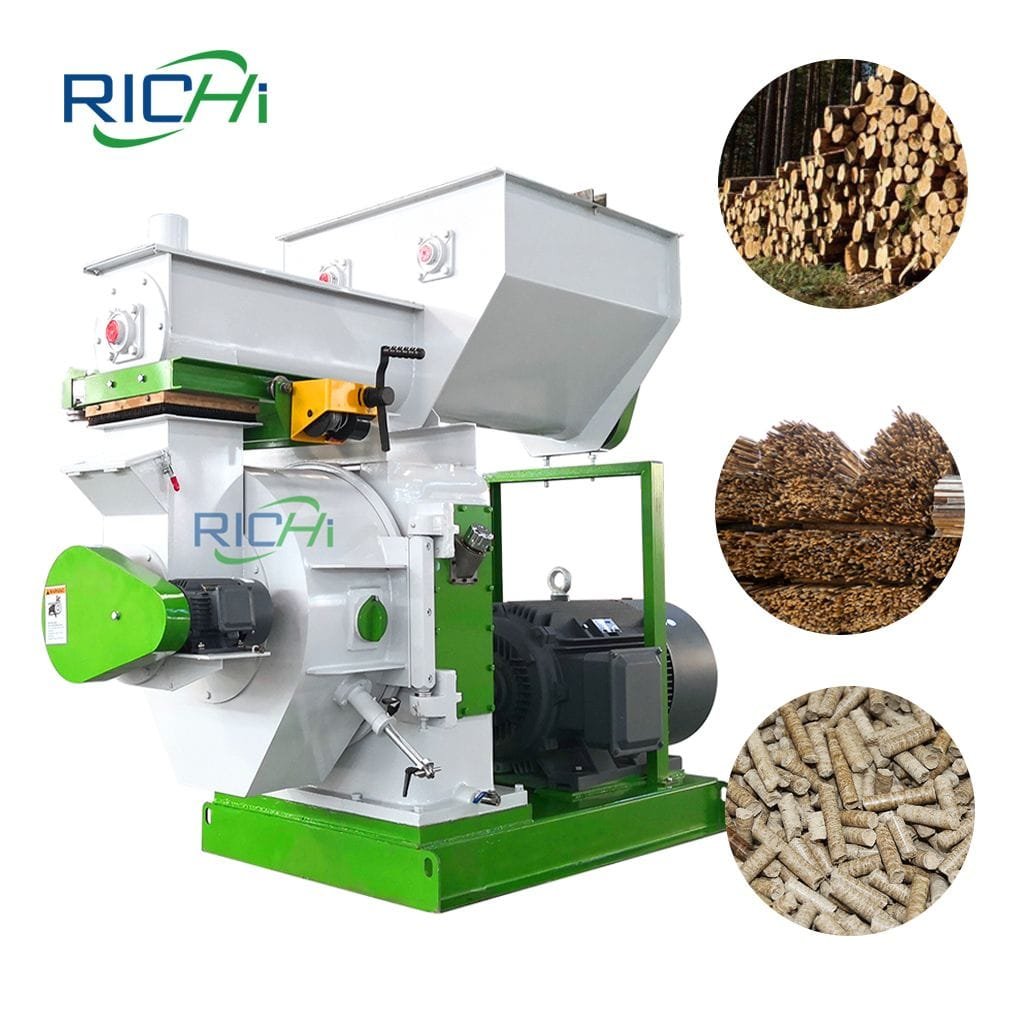The efficiency and performance of a hardwood pellet mill heavily depend on the quality of its accessories. These components, which include feeders, crushers, conditioners, dies, rollers, cooling systems, and packaging equipment, play a crucial role in the production process. Evaluating the quality of these accessories using technical indicators is essential for ensuring optimal operation, reducing downtime, and producing high-quality pellets. This article discusses the key technical indicators used to assess the quality of hardwood pellet mill accessories and their significance in the production process.
1. Moisture Content
Moisture content is a critical factor that affects the performance of hardwood pellet mill accessories, particularly during the conditioning and pelleting processes.
- Impact on Pellet Quality: The ideal moisture content for hardwood pellets typically ranges from 10% to 15%. If the moisture content is too high, it can lead to poor pellet formation and increased energy consumption. Conversely, insufficient moisture can result in weak pellets that break easily.
- Measurement Techniques: Moisture content can be measured using moisture meters or ovens. Regular monitoring ensures that the raw material is conditioned properly, leading to better binding and higher-quality pellets.
2. Particle Size Distribution
The particle size of the raw material significantly impacts the efficiency of the pelleting process and the quality of the final product.
- Importance of Size Reduction: The crusher must effectively reduce hardwood to a particle size of less than 5 mm for optimal pelleting. A consistent particle size distribution ensures uniformity during the pelleting process, leading to better pellet quality.
- Testing Methods: Sieve analysis is commonly used to determine particle size distribution. By analyzing the size of the particles, manufacturers can adjust the crushing process to achieve the desired specifications.

3. Die and Roller Quality
The die and rollers are critical components of the pellet mill, responsible for compressing the hardwood into pellets. Their quality directly affects the efficiency and durability of the machine.
- Material and Design: High-quality dies and rollers are made from wear-resistant materials, ensuring longevity and consistent performance. The design of the die holes, including their size and distribution, impacts the pressure and temperature within the pelleting chamber.
- Performance Indicators: Key performance indicators for dies and rollers include wear rate, durability, and the ability to maintain consistent pellet size. Regular inspections can help identify wear patterns and determine when replacements are necessary.
4. Mechanical Durability
Mechanical durability refers to the ability of the pellets to withstand handling and transportation without breaking or crumbling.
- Testing Methods: Mechanical durability is often tested using a durability test, where a sample of pellets is subjected to mechanical stress to determine how well they hold up under pressure. High-quality pellets should maintain a mechanical durability of approximately 96.5% or higher.
- Impact on Production Costs: Pellets with high mechanical durability reduce waste and increase profitability by minimizing losses during handling and transportation. Assessing durability is crucial for ensuring that the final product meets market demands.
5. Bulk Density
Bulk density is an important indicator of the energy content and storage efficiency of the pellets.
- Significance: Higher bulk density indicates that the pellets are compact and have a higher energy content per unit volume. This is essential for maximizing storage space and transportation efficiency.
- Measurement Techniques: Bulk density can be measured by filling a known volume with pellets and weighing them. Consistent bulk density is a sign of quality and effective pelleting processes.
6. Ash Content
Ash content is a critical factor in determining the combustion efficiency and environmental impact of the pellets.
- Regulatory Standards: Different applications have varying ash content requirements. For instance, high-quality wood pellets should have an ash content of less than 1%. Excessive ash can lead to increased emissions and reduced efficiency in combustion systems.
- Testing Methods: Ash content is typically measured by incinerating a sample of pellets and weighing the remaining ash. Regular testing ensures compliance with industry standards and helps producers maintain product quality.
7. Surface Quality
The surface quality of the pellets affects their handling characteristics and overall marketability.
- Visual Inspection: High-quality pellets should have a smooth surface with minimal cracks or imperfections. Visual inspections can help identify issues related to the pelleting process, such as inadequate conditioning or excessive moisture.
- Impact on Marketability: Pellets with a uniform and attractive appearance are more likely to attract buyers and command higher prices in the market. Ensuring surface quality is essential for maintaining a competitive edge.
8. Energy Consumption
The energy consumption of the pellet mill and its accessories is a critical factor in determining operational costs.
- Efficiency Metrics: Monitoring energy consumption during the pelleting process can help identify inefficiencies in the equipment. High-quality accessories should operate efficiently, minimizing energy use while maximizing output.
- Cost Implications: Reducing energy consumption not only lowers operational costs but also contributes to the sustainability of the production process. Regular assessments of energy use can help identify areas for improvement.
Conclusion
Evaluating the quality of hard wood pellet mill accessories through technical indicators is essential for ensuring optimal performance and producing high-quality pellets. Key indicators such as moisture content, particle size distribution, die and roller quality, mechanical durability, bulk density, ash content, surface quality, and energy consumption provide valuable insights into the effectiveness of the equipment.By regularly monitoring these indicators, manufacturers can make informed decisions about maintenance, adjustments, and upgrades to their hardwood pellet mill accessories.
Investing in high-quality components and implementing best practices for evaluation and maintenance will contribute to the long-term success and sustainability of hardwood pellet production operations. As the demand for renewable energy sources continues to grow, prioritizing the quality of pellet mill accessories will be crucial for maintaining a competitive edge in the market.

